PRIMAVERA IN MUSEO Aprile-Maggio 2009 Con l’entrata in vigore dell’orario estivo il Museo propone al pubblico iniziative ludiche e di approfondimento. Le attività prenderanno il via domenica 5 aprile con una giornata dedicata al disegno. I ragazzi delle scuole dell’obbligo, affiancati da illustratori professionisti, di cimenteranno in “disegna il tuo animale preferito”! Nel proseguo il […]
Presso la Ludoteca GiocaGulp, da ormai nove anni ogni estate viene proposta una festa a tema. Per il secondo anno consecutivo il Museo e l’ADN aderiscono all’iniziativa proponendo laboratori ludico-didattici per ragazzi. Lo scorso anno è stato proposto il “Gioca…Ammonite”, un simpatico gioco dell’oca paleontologico che ha riscosso grande successo tra i giovani partecipanti, che […]
In affiancamento al progetto “Musei di Notte”, il Museo di Scienze Naturali ha aderito anche all’iniziativa “Estate: vivi la tu città”. Sono state proposte una serie di attività didattiche e culturali gratuite che si sono svolte le domeniche pomeriggio nei mesi estivi all’interno dei musei di Città Alta: visite guidate e laboratori aperti a tutti, […]
La manifestazione prevede numerose iniziative, percorsi didattici, momenti di animazione e intrattenimento, allo scopo di invogliare i bergamaschi ed i turisti a scoprire i luoghi straordinari della città, patrimonio di tutti. Bergamo Estate 2007 al Museo L’istituto di Geologia e Paleontologia del Museo organizza una serie di escursioni serali alla scoperta di Città Alta. Le […]
Sabato 23 Giugno 2007 Ha preso il via la manifestazione “Musei Notti Aperte” che vede i Musei cittadini aperti tutti i sabati sera dalle 19 alle 24 fino al 29 settembre. Ogni week end, a turno, i vari Musei cittadini offriranno una serie di iniziative speciali. Il Museo di Scienze Naturali proporrà eventi e attività […]
Sabato 4 Ottobre 2008 Ore 17.00 Sala del Pliocene e Pleistocene: “2008: l’età della pietra”Inaugurazione della mostra dedicata ad uno più antichi prodotti dell’artigianato bergamasco: la pietre da coti. Parteciperanno alcuni minatori ed operai specializzati che hanno lavorato la pietra da coti in Valle Seriana fino agli anni settanta. Ore 20.00 – 23.00 Sala Allosauro […]
GeneraleRaccolta comprendente rocce provenienti da varie località lombarde, italiane ed estere. Da ricordare le rocce della ferrovia ligure tra Monterosso e Framura e quelle del traforo del S. Gottardo. Tra le numerose donazioni che hanno contribuito alla creazione di questa collezione sono da ricordare le donazioni Zambelli, Caffi, Bianchi Potenza e Industrie Marmi Comana. […]
Collezione comprendente circa 600 specie mineralogiche. Solo pochi campioni sono stati acquistati, mentre la maggioranza deriva da donazioni e campagne di ricerca. Terzi FedericoContiene i campioni provenienti dall’Isola d’Elba che rappresentano il primo nucleo della collezione mineralogica del Museo. Donata nel 1887 dal Sig. Federico Terzi, ha un elevato valore storico. Caffi EnricoCollezione […]
La collezione contiene reperti provenienti da tutto il mondo, acquisiti nel corso degli anni grazie a donazioni da parte di istituzioni e privati, tramite acquisto da parte del Museo e mediante campagne di scavo. Annovera più di 10.000 pezzi tra fossili originali, calchi e riproduzioni. Molti reperti sono stati acquistati a fini espositivi per fornire […]
GeneraleIl primo nucleo della collezione risale al 1867 e la raccolta viene continuamente ampliata tramite acquisto di fossili. Alcuni reperti provenienti dalla località di Perledo (LC) sono stati donati al Museo alla fine del 1800, altri provengono da una campagna di scavo condotta nella cava di Bolca (VR). Varisco AntonioRaccolta comprendente fossili del Paleozoico […]


